Do you have a question about the Pioneer MVH-270DAB and is the answer not in the manual?
Introduces basic operation and frequently used controls of the unit.
Explains the basic controls and frequently used operations of the unit.
Details common operations like turning the unit on/off, adjusting volume, and selecting sources.
Instructions on how to detach and attach the front panel for theft prevention.
Guides through initial setup options like language, clock, and FM step.
Procedure to disable the demonstration mode of the unit.
Explains how to perform an initial setup or reset the unit to factory defaults.
Steps to search for and select DAB radio stations or service components.
How to browse and select DAB services by type or ensemble.
Instructions for storing and recalling preset DAB stations.
How to receive and select preset radio stations.
How to store the six strongest stations automatically.
Manual tuning process to find radio stations.
How to manually store a currently tuned radio station.
Searching for radio stations based on program type (PTY).
Instructions for connecting and playing audio from USB devices or iPods.
Steps to connect a USB device or iPod to the unit.
Information on connecting Android devices via MTP protocol.
How to connect and select an auxiliary audio source.
Details on controlling playback for USB/iPod, including track selection and search.
Accessing songs based on artist, album, or genre related to the current song.
How to control the iPod unit from the car stereo or vice versa.
Steps to connect and use iPhone applications via the car stereo.
Describes basic playback controls for applications used via the unit.
Settings related to radio tuning, DAB reception, and sound enhancement.
Adjusts sound parameters like equalizer, loudness, and subwoofer settings.
Configures unit settings such as language, clock, and auxiliary input.
Adjusts display brightness and dimming settings.
Adjusts the balance between front and rear speakers.
Adjusts the balance between left and right speakers.
Selects or customizes equalizer curves and bands for better sound.
Compensates for clear sound at low volume levels.
Selects the subwoofer phase (normal, reverse, or off).
Sets the cut-off frequency and output level for the subwoofer.
Adjusts the level of bass boost for enhanced low frequencies.
Sets the high-pass filter cut-off frequency and slope for speakers.
Selects the display language for text information.
Sets the current time for the unit's clock.
Selects the time notation format (12-hour or 24-hour).
Allows retuning to the same station on a different frequency.
Enables or disables the auxiliary input for external devices.
Automatically mutes or attenuates sound for incoming signals.
Reduces battery power consumption when the unit is off.
Adjusts the display brightness, either synced to clock or manual.
Sets the display brightness level from 1 to 10.
Details essential wiring connections for power, speakers, and remote controls.
Specific instructions for connecting the power cord, especially for non-ACC vehicles.
Identifies the input/output terminals on the unit for connections.
Explains the ISO connector and specific wiring considerations for different vehicle types.
General important notes and precautions before installing the unit.
Describes methods for installing the unit using DIN front or rear mounting.
Instructions on how to safely remove the unit from the dashboard.
Common issues and solutions for the unit's operation.
Explains common error messages and their remedies.
Advice on using USB storage devices and handling potential issues.
Details compatibility for compressed audio files like WMA and MP3.
Specifies file extension and compatibility for WMA audio files.
Details file extension, bit rate, and sampling frequency for MP3 files.
Notes compatibility for WAV audio files and MTP connection.
Information on AAC file compatibility and transmission rates.
Discusses USB device compatibility, folder hierarchy, and playable files.
Lists supported iPod models and software versions.
Explains how audio file sequences are determined by the connected device.
Information on iTunes trademarks and their usage.
Details on WMA trademark and Microsoft's technology license.
Information on iPod & iPhone trademarks and Apple's standards.
General specifications including power source, dimensions, and weight.
Detailed specifications for power output, impedance, and audio features.
USB standard, current supply, and supported file systems.
Specifies the MP3 decoding format supported by the unit.
Details the WMA decoding formats supported by the unit.
Specifies the AAC decoding format supported by the unit.
Information on supported WAV signal formats.
Technical specifications for the FM tuner.
Technical specifications for the MW tuner.
Technical specifications for the LW tuner.
Technical specifications for the DAB tuner.
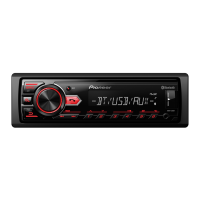

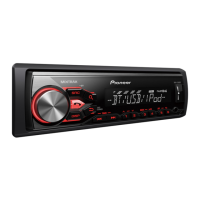
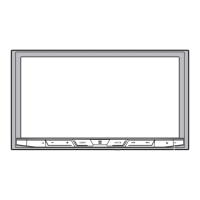


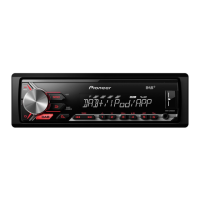
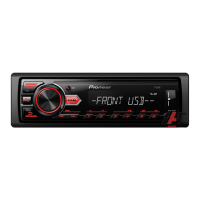
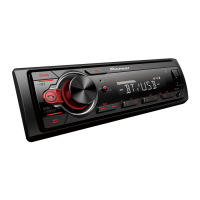
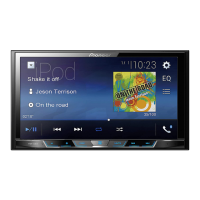


